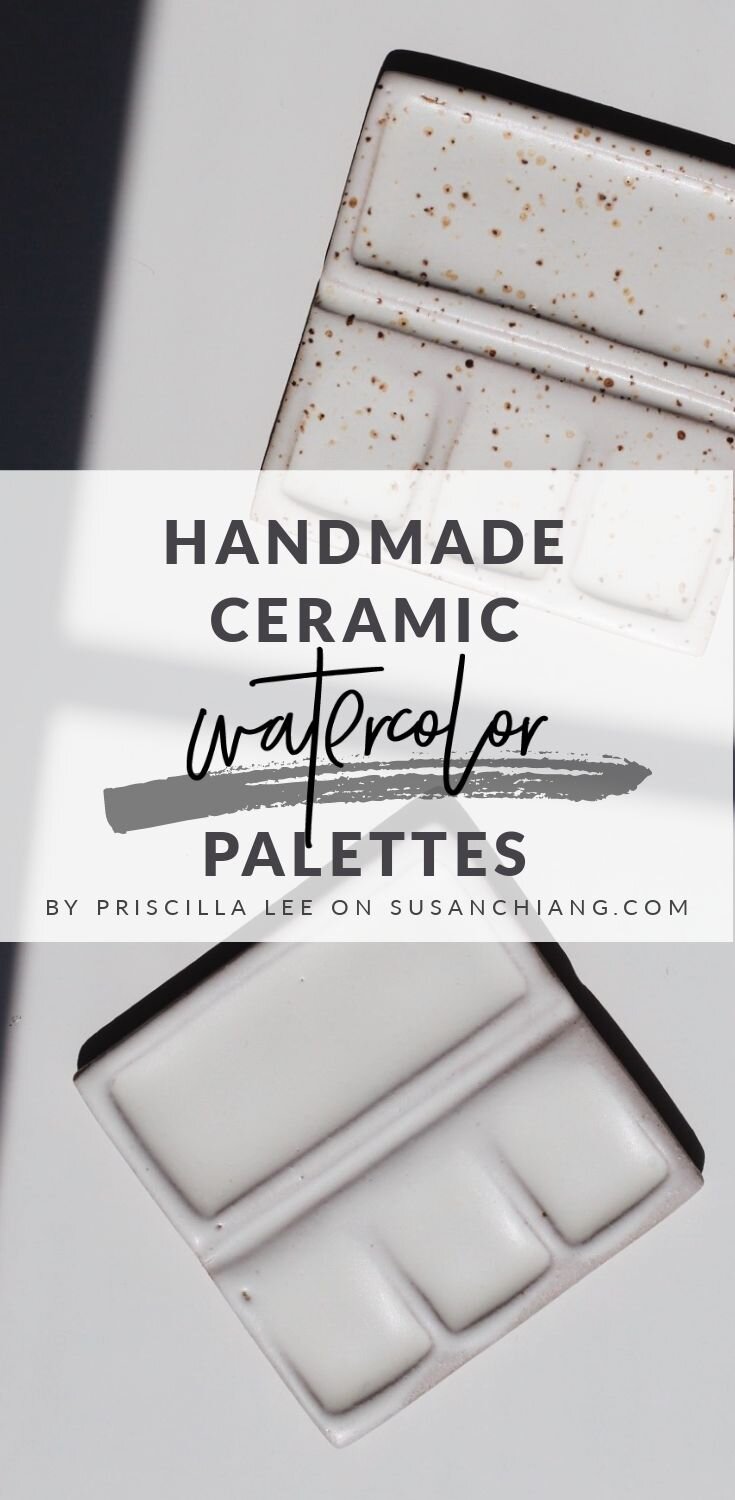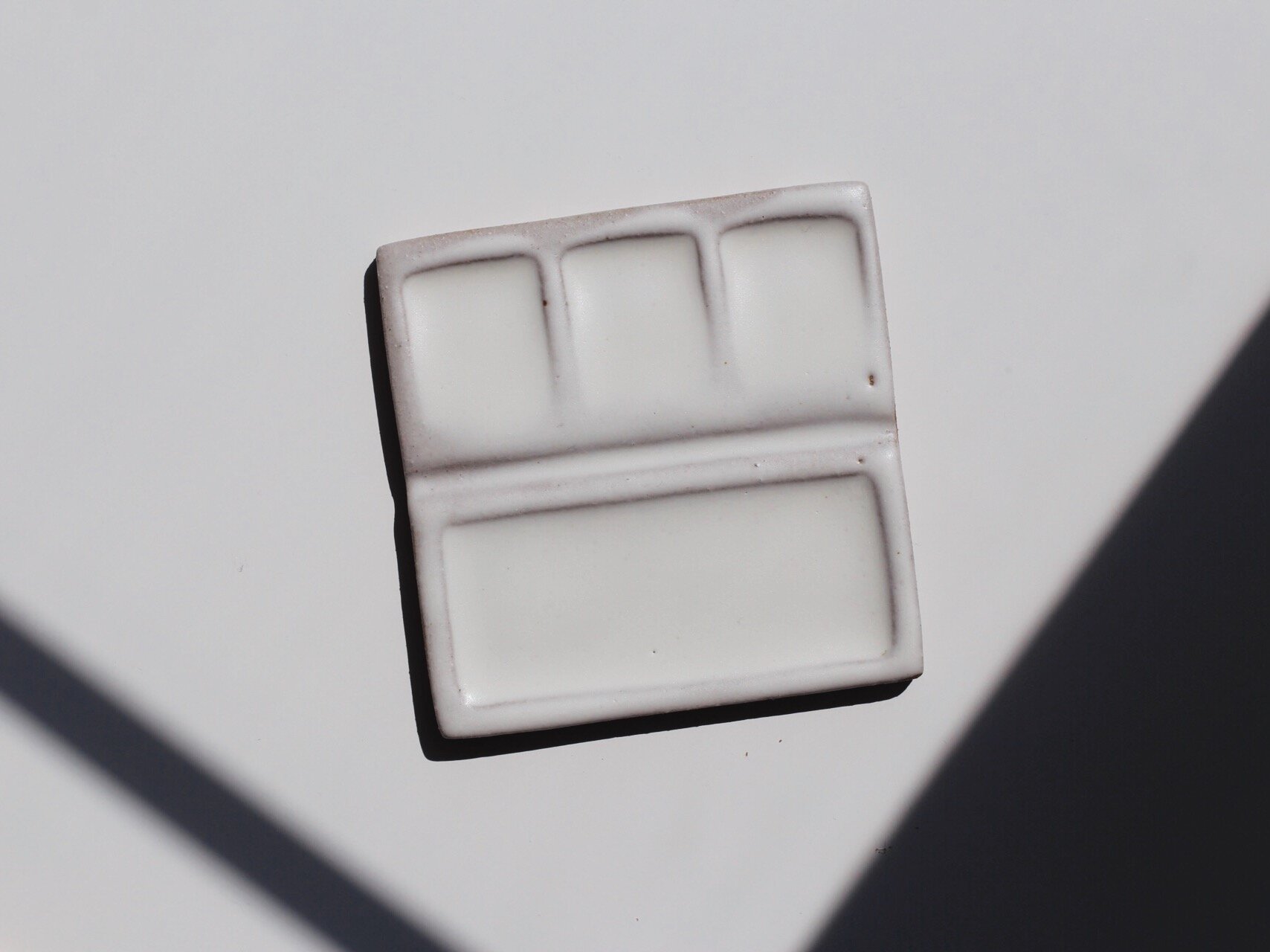The Making of Handmade Ceramic Watercolor Palettes
Today’s post is written by a guest author, the very talented Priscilla Lee! Priscilla is an artist with a beautiful, delicate sensibility. Besides calligraphy and watercolor, she is a maker of ceramic watercolor palettes, brush holders, and more. Below, she shares the story behind her journey to ceramics and what goes into making her handmade watercolor palettes.
I began working with clay January of 2018. I had been wanting to learn for years and finally signed up for an eight-week beginner’s course at my local ceramic studio, not knowing that the course would be the first of many, many hours I would devote to molding, shaping and carving clay into different forms. My first day of class was not what I expected. I had watched videos of people centering their ball of clay on the potter’s wheel and thought I knew what to do, yet I struggled to maintain any resemblance of grace and pose as I struggled to control the tiny ball of clay on the wheel. Despite the difficulty, I loved the tactile sensation of sinking my fingers into the clay and literally, getting my hands dirty. Needless to say, I was hooked!
In some ways, I think ceramics is very much like watercolor. It requires a lot of patience. Just like the multiple, delicate layers of washes you paint to get the perfect gradient on a petal, clay also requires multiple steps to get from its raw form into its final, glazed form. There are texturally different clay bodies, similar to the different water paper options (hot press, cold press, rough). Even glazing can be done in layers and with underglaze that mimics the soft, transparency of watercolor. And on a more fundamental level, ceramics and watercolor both uses naturally materials sourced from the earth.
The inspiration for my ceramic palettes came at a time I was taking inventory of my personal and work-related footprint on the environment and looking into sustainable practices for my personal and work life. I had started working with a new medium, clay, with the hope of creating some custom, long-lasting pieces for my home. But as I continued working and creating with clay, I began to think about items I could make for my creative endeavors that could cut down on my plastic consumption while serving as both functional and decorative objects in my office.
While brainstorming ideas, I kept coming back to two nesting ceramic watercolor cups I own. They were made by a ceramic artist based in Northern California and are two of my most treasured items in my office. I love using them and I love displaying them next to my jar of brushes on my desk. I wanted to create ceramic pieces that would evoke this exact feeling from other creatives. Pieces that would be used and cherished by other creatives. Pieces that will be proudly displayed on their desks, not stuffed into a drawer (like my plastic palettes). As a watercolor artist, the most obvious choice for my first project was to make palettes. I was excited about the endless design possibilities but more importantly, I was excited to create ceramic palettes that could finally replace the flimsy plastic ones I have been accumulating for some time.
My palettes are truly a labor of love. A large lump of raw clay is kneaded by hand to get rid of any air pockets. The clay is rolled into slabs and cut into shapes with a custom cutter. The clay is left to harden just so that it becomes stiff enough to maintain the integrity of its shape, but still soft enough to carve. Each well of every palette is carved by hand. This is probably the most painstaking and labor-intensive part of the production process. Once the carved palette is completely dry, I work sandpaper around the grooves and edges of the palette to smooth out any rough spots and then, place it in the kiln for its bisque firing, which will burn off any moisture, carbon, and sulfur in the clay body, and make the palette dense enough for glaze.
After the bisque firing, I prepare the palette for glaze. I wipe off all dust and particles from the surface and then, depending on how I want to glaze the piece, I wax or tape areas that I do not want glazed. Once my glaze is sifted and mixed with water to the perfect consistency, I dip the palette into the glaze for a few seconds and set it out to dry. Once dry, I remove the tape, clean off any glaze drips and place it in the kiln for its second and final firing. After the glaze firing, I sandpaper the bottom of the palette to make it smooth (stoneware can be particularly rough and gritty in texture) and wash it. And finally, it is ready for its forever home.
I have learned that the one constant with clay is that there is no constant and that perfection is overrated. You work with what nature provides and learn to appreciate the variances. Like all handmade items, each palette will vary slightly in shape, size and depth of the wells. And depending on each bag of clay, the outcome may vary in color, shrinkage and grittiness. My hope is that other creatives will find beauty in these variances and that the palettes become a meaningful addition to their workspaces and creative process.
My palettes are sold in small batches a few times a year, usually through my website.
If you are based in Southern California and want to see the palettes in person, check out CalligraFair on October 12 and 13, 2019 at Smitten on Paper in Monrovia, California. I will be a vendor there and will be bringing palettes as well as other ceramic pieces for the modern creative!
I hope that you enjoyed this post featuring Priscilla Lee and her beautiful ceramics. I picked up one for myself last year and if you’re curious how I use mine… I enjoy using it at home for pieces where I have a specific color palette that uses the same few colors over and over - like I did here when practicing Maisa the dog. You can actually spot Priscilla’s palette in the video!




